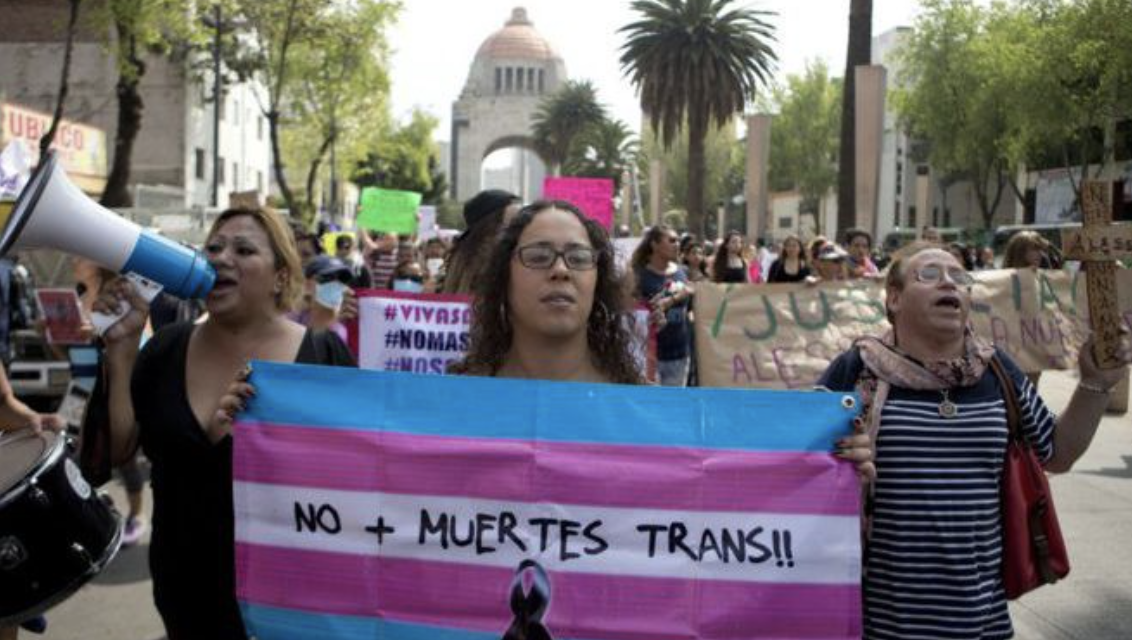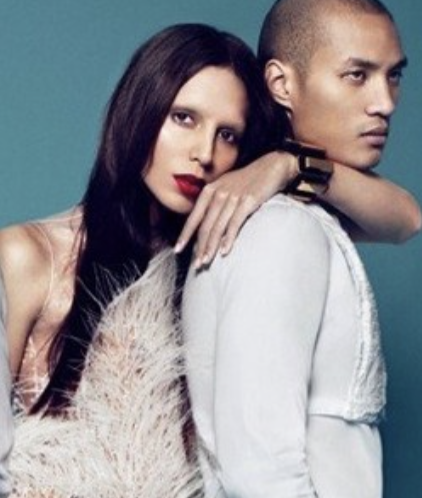By Amaya Lena Fernandez Sampedro
As the numbers of LGBTQIA+ people murdered in Latin America increase dangerously, the fashion industry might be the light to the dark outcome of transgender people living in the region.
Between 2008 and 2020, the Observatorio de Personas Trans Asesinadas reported 3664 assassinations in Latin America. The region is the area where the trans community experiences the most violence. 82% of all transgender assassinations in the world occur in Central and South America.
Two trans women are bringing hope to the community after gaining popularity in the fashion industry. Lea T and Valentina Sampaio are breaking barriers in Latin America by being among the most prominent trans models in the world. They are both making history, walking for the most prestigious brands. Beside modelling, Lea T and Sampaio have used their voice and platforms to bring visibility to trans people’s struggles and express their support to the community.
Lea T for the Givenchy ad campaign
Lea T’s growth in fashion kicked off in 2010 at 29 years old after her good friend, the designer Riccardo Tisci, cast her in his Givenchy ad campaign. Soon after, she started modelling for other popular brands such as Benetton and appeared in Vanity Fairs, Vogue Paris and Love magazine. In 2014, the Brazilian model became the face of the international cosmetic company Redkin — which belongs to L’Oreal’s group. Lea T was the first supermodel to sign a contract with a global company that sells beauty products.
Valentina Sampaio is another highly acclaimed Brazilian trans woman model. One of seven children, she was born to a family of fishermen and lacemakers in a small fishing village in northern Brazil. While studying to be a fashion designer in Fortaleza, she decided to get into modelling. Sampaio began with photoshoots until she moved on to the runways before gaining international success. In the last few years, the Brazilian model revolutionized the fashion industry by becoming the first trans model to appear on Vogue Paris’s cover. In 2019, Sampaio was the first trans model to be welcomed into the Victoria’s Secret family and the first trans model to feature in Sports Illustrated. “Every first is precious because it’s a step forward, not just for me but for the entire trans community,” Sampaio said during a Vogue interview.
Valentina Sampaio on the cover of Vogue Paris, French Vogue March 2017
Besides their success within the fashion industry, Lea T and Valentina Sampaio also use their notoriety to raise awareness of the discriminations experienced by their community. Both models encourage tremendous respect for the community and inclusivity in Brazil. The country is among the most dangerous places in the world for trans people. The election of President Jair Bolsonaro in 2018, who numerously expressed his homophobia, put LGBTQIA+ civil rights in jeopardy. Damares Alves — Bolsonaro’s minister of women and family — declared back in 2018 that “Girls will be princesses, and boys will be princes’’ in the new Brazil. She added, “There will be no more ideological indoctrination of children and teenagers.”
Moreover, in 2016, Lea T made history after participating in the Olympic Games opening in Rio de Janeiro. In front of 70.000 people inside the Maracana stadium, the model drove the Brazilian team under proud cheers. Her participation symbolised hope for the recognition of transgender and LGBTQIA+ groups in Brasil and Latin America. In an interview with BBC Brasil, she explained her involvement in the opening ceremony meant to her and her community the necessity to fight discriminations. She believed that her presence in the Maracana stadium would spread the message that it is important to include everybody, no matter your gender, sexual orientation, race or religion, and that we are all human beings.
On the other hand, in an interview with Vogue, Sampaio also expressed her sincere wish to have more inclusivity in Brazil. She claims that: “While trans visibility in fashion has become part of the cultural conversation, globally we still have a long way to go, not just in terms of representation but also in terms of the trans people’s safety and even their rights”. Then she added, “I come from a country that has the highest LGBTQIA+ and transgender murder rate — and it is rising. Those who killed have faced little over no consequence for their crimes. We are treated as if we are disposable.” As reported by the Inter-American Commission on Human Rights, in 2015, the average life expectancy for trans people in Latin America was just 35 years, compared with 75 for the population as a whole.
Lea T at the Opening Ceremony of the Rio Olympic Games | Getty Images
Sampaio has suffered a lot of discrimination during her first modelling jobs; she was fired from the clothing company for identifying as transgender. The model recalls her everyday struggle in being a trans woman, “Being Trans usually means facing a closed-door to people’s hearts. It often means facing family rejection, traumatising bullying at school and very limited, dignified professional opportunities.”
Consequently, the Victoria Secret model wishes to see people, brands and companies become more open and to fully embrace the trans community with compassion and respect — without fear of criticism. She believes having more appreciation for trans people will educate others and gain more visibility for the LGBTQIA+ community.
Sampaio and Lea T are committed to using their platform to engage with those in their community. Both models regularly post on social media their support for the LGBTQIA+ community and bring attention to transgender issues. Additionally, back in July 2020, Lea T showed her support for the Black Lives Matter protests to stop the police violence against them. Black trans people suffer more violence than other groups.
Lea T showing her support for Black Trans rights on her Instagram @leat
Fortunately, the serious engagement of trans activists in Latin America has paid off the recognition of trans communities. An article by The Economists, say “a survey by ILGA found that some 70% of Latin America respondents agreed that gays and trans people should enjoy the same legal rights as anyone else, the highest figure anywhere”. Javier Corrales, a political scientist at Amherst College in Massachusetts, says, “the region has seen a huge change in terms of its willingness to talk about this”.
Moreover, Chile has become one of the most inclusive countries in Latin America after opening the first — believed to be — school in the world for transgender children. Named after the Mexican transgender politician Amaranta Gomez Regalado, the school welcomes children aged 6 to 17. According to a BBC report, most students attend school after dropping out of their previous schools, which usually happen once they begin transitioning. The headteacher, Evelyn Silva, asserts, “At this school, the kids are who they want to be now”. One student also says that teachers are more understanding and respectful at this school than at their previous schools.
These waves of activism have been beneficial for trans people in LA. Accepting more transgender people to model for brands represents a massive step for recognising the community, and it sends a message of hope for LGBTQIA+ communities in Latin America.
Amaya Lena Fernandez Sampedro is a third-year International Relations student at King's College London, particularly keen on telling the stories of women who are positively changing Latin America. Her other research interests are the media construction of the Latinx community and Latin music.





